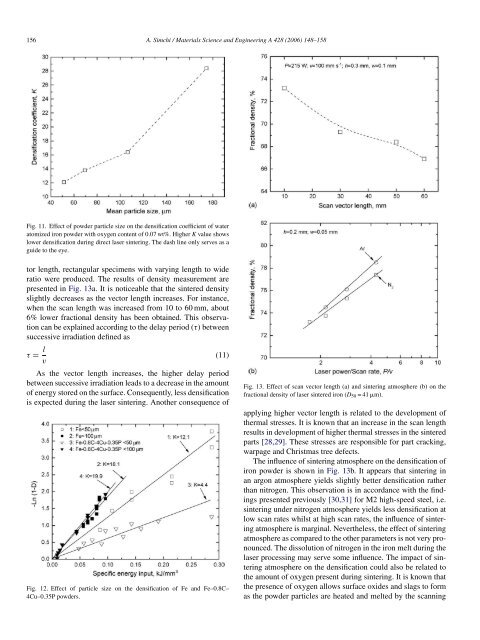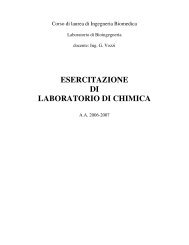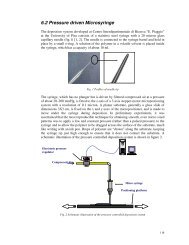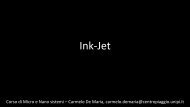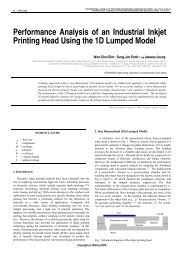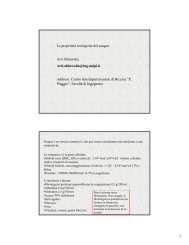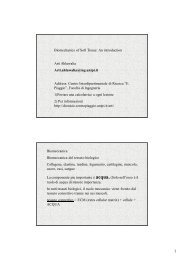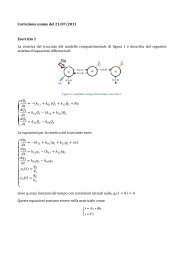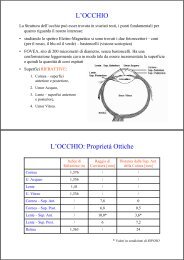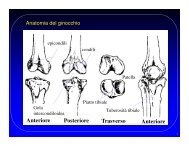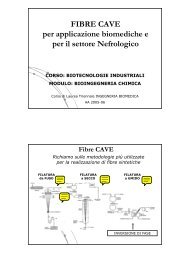Direct laser sintering of metal powders: Mechanism, kinetics and ...
Direct laser sintering of metal powders: Mechanism, kinetics and ...
Direct laser sintering of metal powders: Mechanism, kinetics and ...
- No tags were found...
Create successful ePaper yourself
Turn your PDF publications into a flip-book with our unique Google optimized e-Paper software.
156 A. Simchi / Materials Science <strong>and</strong> Engineering A 428 (2006) 148–158Fig. 11. Effect <strong>of</strong> powder particle size on the densification coefficient <strong>of</strong> wateratomized iron powder with oxygen content <strong>of</strong> 0.07 wt%. Higher K value showslower densification during direct <strong>laser</strong> <strong>sintering</strong>. The dash line only serves as aguide to the eye.tor length, rectangular specimens with varying length to wideratio were produced. The results <strong>of</strong> density measurement arepresented in Fig. 13a. It is noticeable that the sintered densityslightly decreases as the vector length increases. For instance,when the scan length was increased from 10 to 60 mm, about6% lower fractional density has been obtained. This observationcan be explained according to the delay period (τ) betweensuccessive irradiation defined asτ = l v(11)As the vector length increases, the higher delay periodbetween successive irradiation leads to a decrease in the amount<strong>of</strong> energy stored on the surface. Consequently, less densificationis expected during the <strong>laser</strong> <strong>sintering</strong>. Another consequence <strong>of</strong>Fig. 12. Effect <strong>of</strong> particle size on the densification <strong>of</strong> Fe <strong>and</strong> Fe–0.8C–4Cu–0.35P <strong>powders</strong>.Fig. 13. Effect <strong>of</strong> scan vector length (a) <strong>and</strong> <strong>sintering</strong> atmosphere (b) on thefractional density <strong>of</strong> <strong>laser</strong> sintered iron (D 50 =41m).applying higher vector length is related to the development <strong>of</strong>thermal stresses. It is known that an increase in the scan lengthresults in development <strong>of</strong> higher thermal stresses in the sinteredparts [28,29]. These stresses are responsible for part cracking,warpage <strong>and</strong> Christmas tree defects.The influence <strong>of</strong> <strong>sintering</strong> atmosphere on the densification <strong>of</strong>iron powder is shown in Fig. 13b. It appears that <strong>sintering</strong> inan argon atmosphere yields slightly better densification ratherthan nitrogen. This observation is in accordance with the findingspresented previously [30,31] for M2 high-speed steel, i.e.<strong>sintering</strong> under nitrogen atmosphere yields less densification atlow scan rates whilst at high scan rates, the influence <strong>of</strong> <strong>sintering</strong>atmosphere is marginal. Nevertheless, the effect <strong>of</strong> <strong>sintering</strong>atmosphere as compared to the other parameters is not very pronounced.The dissolution <strong>of</strong> nitrogen in the iron melt during the<strong>laser</strong> processing may serve some influence. The impact <strong>of</strong> <strong>sintering</strong>atmosphere on the densification could also be related tothe amount <strong>of</strong> oxygen present during <strong>sintering</strong>. It is known thatthe presence <strong>of</strong> oxygen allows surface oxides <strong>and</strong> slags to formas the powder particles are heated <strong>and</strong> melted by the scanning


